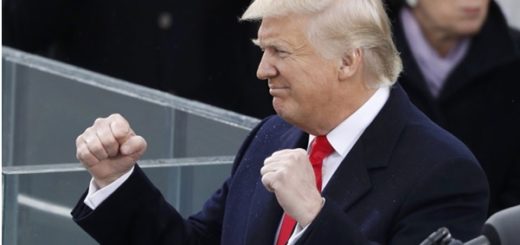Celebration of Easter in Dalit Perspective

Fr. Francis Sunil Rosario from U. S. A.
(Note: The Dalit Perspective on Easter by Fr Francis Sunil Rosario is an indepth and a challenging analysis of the meaning of Easter. Fr Sunil was the erstwhile Editor of Herald Kolkata, recently completed his M.Phil. from University of Dublin, Ireland and is now at Brooklyn, USA for his doctoral studies. Cover Photo shows Fr Sunil visiting Dr James Kottoor at his Chicago home in February 2017. To quote Fr Sunil on the visit: "We spoke a lot on various topics and he (Dr Kottoor) is full of life". – Isaac Gomes, Associate Editor, CCV).
Introduction:
In recent times, the theology of Dalit has emerged in India and abroad to make the marginalized community relevant in the mainstream society. What is the significance of the celebration of Easter in the context of Dalit and subaltern communities?
St. Paul, identified a central theme of the gospel of Jesus Christ when to the Corinthians he wrote:
“If in this life only we have hope in Christ, we are of all men most miserable.
“But now is Christ risen from the dead, and become the first fruits of them that slept.
“For since by man came death, by man came also the resurrection of the dead.
“For as in Adam all die, even so in Christ shall all be made alive.” (1 Cor. 15:19–22.)
Jesus, Church and Dalit Liberation
The person of Jesus Christ continues to be the central focus of the Christian experience. The kenotic experience he underwent makes him one with all those who suffer and are oppressed. Through him, God’s address is made to humankind so that men and women are transformed and attain their true humanness and divine dignity.
The social practices of our society has pervaded deeply into Christianity. The upper caste converts to Christianity though gave up the religion did not give up their caste practices that were so prevalent in the society and thus the caste discriminations are found both opening and in subtle manner. Separate grave yards are maintained in many areas. The cemetery in the city of Tiruchirapalli in Tamilnadu is a well known one giving a mute testimony for the caste practices among Christians even after death. K.K. Pudur, a village in Chengalpattu Dist., 60 KM away from Chennai, has a Christian population of 2500 and among them 1500 are Dalit Christians and the rest belong to Reddy and Naidu communities. Dalit Christians have been oppressed by upper caste Christians who did not give them their due place in the Church and in the graveyard.
The Church leaders have accepted that caste discrimination and untouchable practices exist within the Church and exhorted the people to move towards greater equality. His Holiness John Paul II on Nov. 17, 2003 addressed a group of Bishops from India, “They (Christians of SC origin) should never be segregated from other members of society. Any semblance of a caste-based prejudice in relations between Christians is a countersign to authentic human solidarity, a threat to genuine spirituality and a serious hindrance to the Church’s mission of evangelization. Therefore, customs or traditions that perpetuate or reinforce caste division should be sensitively reformed so that they may become an expression of solidarity of the whole Christian community.”
The Statement of the CBCI (Mangalore Jan 9-17, 1978) says: “The dignity of man confers certain inalienable rights upon him, whatever be the accident of his birth. Any curtailment, or, what is worse, denial of these rights is an act of injustice, Hence, discrimination of any type must be part of our Christian concern. When, unfortunately, it is practiced within the Church itself, it becomes a countersign to the Gospel values we profess.” Again the Statement of CBCI (Kottayam 1988) says: “The discrimination based on caste that is rampant in the rest of society continues also among Christians. Most Christians of SC origin are still deprived of economic opportunities, access to adequate educational facilities, leadership roles and participation in decision-making.”
Despite its development as a formidable economic power, it’s shocking that 160 million Dalits in India continue to be the most deprived dispossessed and dehumanized segment of Indian society. Not only do they encounter great difficulty in gaining access to the basic minimum facilities of life like education, housing and health, but they also continue to face discrimination in public life, job opportunities and political participation. The thought patterns about themselves, society and the world are largely imposed upon them by the dominant castes, thus they are deprived of their own way of thinking, behaving, and living. In our caste ridden society, the process of “Internalized oppression” continues.
The Proclamation of Christianity
In the biblical narrative of creation, God is seen creating all human beings equal. They are made in the image of God. A just society considers all persons equal before the law. Christianity, as derived from the life and message of Jesus Christ, proclaims the equal status and dignity of every human being and the consequent right of every person to live in freedom. Through his life, death and resurrection, Jesus reveals God as Father all men and women who are equal members in God’s family. In the history of the Old Testament God is seen as one who sides with the slave, the orphan, the widow, and the defenseless, namely, the anawim. These groups are seen as poor not because of personal failings but because injustice has been done to them. The liberation from Egypt is the enduring paradigm of God’s power exercised on behalf of those who suffer because of injustice. Today’s people of Israel’ who groan under their bondage are those pushed to the margins of society, especially the Dalits.
In the New Testament, Jesus’ concern for the oppressed and suffering is fundamental to his mission to proclaim good news to the poor, to set those in chains free and to bring liberty to the oppressed (Lk 4: 18-19); it fulfils the messianic expectation found in the Old Testament (Is. 61). During his public ministry, Jesus made a decisive option for the poor, the oppressed, the marginalized and the outcast. He reserved his special care and attention for those who were totally looked down upon by society. He chose fishermen as his close disciples; he shared table-fellowship with sinners; he touched the untouchable lepers, healed them and reinstated them in society; he allowed the “polluting’ hemorrhaging woman to touch him thus curing her; he not only asked for a drink from the despised Samaritan woman but also made her a missionary disciple; he praised the gratitude of the Samaritan leper whom he had cured and paid tribute to the compassionate humanity of the ‘Good Samaritan’; he even broke the Sabbath to heal the suffering like the paralytic, the man with the withered hand and the bent woman. He thus restored their dignity as children of Abraham and more importantly, of God. Jesus did not believe that an external agent like birth or touch could cause purity or pollution. For Jesus, only the deliberate intention of committing evil and injustice towards another pollutes a person.
At the Last Supper, Jesus gives to his disciples the broken bread as the symbol of his broken body on the cross. Jesus allies himself with the social outcast, the economically poor and the exploited (Mt 11:19). He sees himself as God’s servant bringing justice to the people (Mt. 12:18). More than expressing mere sympathy and compassion for the miserable condition of the poor and suffering, Jesus stresses the need for prophetic engagement to bring about a community of equals. His prophetic protest can be seen reflected in the anti-caste movements of persons like Ambedkar and Periyar. Jesus’ own life had humble beginnings in a stable, outside normal human habitation, exactly like the Dalits. In his death he was crucified as a despised criminal, abandoned and cast out from the Holy City. He died in close solidarity with all the crucified people of the earth. He emptied himself, becoming like refuse and rejected by society. Through this action of total solidarity with the poor and the outcast, he remains faithful to the will of his Father and proclaims a reign of justice and peace, dignity and equality for all who are victims, like the Dalits.
The Reign of God that Jesus proclaimed is not confined merely to an individual’s conversion but to a community’s transformation. The Church is the community that symbolizes the transforming power of God in the world. It witnesses to the power of Christ changing persons and structures so that all may enjoy a decent and humane existence. To the extent that Dalits experience discrimination in the Church, there is a betrayal of Christian discipleship, Eucharistic fellowship and there, a rejection of God’s Reign as proclaimed by Jesus.
Conclusion
The situation of the Dalits today has come into the consciousness of the Church. Such awareness coupled with the assertiveness of Dalit identity must be seen as positive signs of God’s Reign taking shape in today’s world. As Yahweh made common cause with the people or Israel who were oppressed in Egypt, as Jesus shared fellowship with society’s rejects of his day, so too the Church of today is called to identify itself with the aspirations, the hopes and struggles of the Dalits. The Church will be and appear as an authentic witness to the gospel and a true symbol of God’s liberating initiative in Jesus Christ when it works towards the total emancipation of Dalits. The active involvement of the Church with Dalits in their struggle for liberation, social justice and human dignity while constituting an essential aspect of the Church’s mission in India, will transform the Church itself so that it authentically witnesses to the Christ event in the world. It will be the sign of the Holy Spirit working in the Church to bring about social identity and self-determination to a people that has suffered for centuries.
The reality of the Resurrection of the Savior overwhelms our heartbreak with hope because with it comes the assurance that all the other promises of the gospel are just as real—promises that are no less miraculous than the Resurrection. We know that He has the power to cleanse us from all our sins. We know that He has taken upon Himself all our infirmities, pains, and the injustices we have suffered. We know that He has “risen from the dead, with healing in his wings.” We know that He can make us whole no matter what is broken in us. We know that He “shall wipe away all tears from our eyes; and there shall be no more death, neither sorrow, nor crying, neither shall there be any more pain.” We know that we can be “made perfect through Jesus …, who wrought out this perfect atonement,” if we will just have faith and follow Him. The reality of the Resurrection is Jesus Christ lives, and because of Him, we will all live again.
















